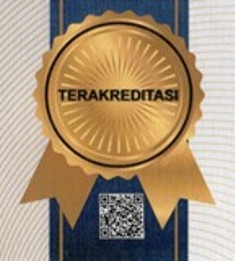Payanie Swamp Ecotourism Landscape as a Tourism Object Destination in Bireuen District, Aceh Province
DOI:
https://doi.org/10.24036/sjdgge.v7i2.556Keywords:
Payanie Swamp, DestinationAbstract
This research aims to describe the Payanie swamp ecotourism landscape as a natural tourism destination. This type of research is qualitative research. The research was conducted in Payanie swamp ecotourism, Bireuen Regency, Aceh Province. This research uses data sources in the form of an inventory and tourism approach, and uses key informants, namely the manager of the Payanie swamp tourist attraction. Data analysis techniques use data reduction, data display, data interpretation, and drawing conclusions. The research results show that; 1) the Payanie swamp ecotourism landscape as a tourist destination is the Payanie swamp including; Payanie swamp land, Payanie swamp animals and Payanie swamp plants, 2) management of Payanie swamp ecotourism is managed well by the private sector, namely the Aceh Wethland Foundation (AWF) and in collaboration with PT. Iskandar Muda Fertilizer.
Downloads
References
[2] Suwena, I.K. and Widyatmaja, I.G.N. 2017. Pengetahuan Dasar Ilmu Pariwisata. Penerbit Pustaka Larasan.2017. pp.18
[3] Statistik Profil Wisatawan Mancanegara Tahun 2016. Kementerian Pariwisata dan Ekonomi Kreatif (Kemenparekraf) Republik Indonesia.
[4] Ahmad Mardalis, Ratna Puspa Wijaya. 2016). Pengelolaan Daya Tarik Wisata Alam Berdasarkan Kepuasan Dan Keinginan Wisatawan. Prosiding Seminar Nasional Ekonomi dan Bisnis. EB UMSIDA.
[5] RI (Republik Indonesia). 2009. Undang Undang tentang Kepariwisataan, UU No. 10 Tahun 2009. Jakarta. Direktorat Jenderal Hukum dan HAM
[6] Kementrian Pariwisata dan Kebudayaan. (2016). Pedoman Kelompok Sadar Wisata. Jakarta. Kementerian Pariwisata.
[7] Helln, A. D., 2017. Pengembangan Obyek Dan Daya Tarik Wisata Alam
Sebagai Daerah Tujuan Wisata di Kabupaten Karanganyar. Jurnal Sosiologi DILEMA, Vol. 32, No. 1. ISSN: 0215/9635
[8] Mill, Robert Christie; Terj. Tri Budi Sastrio. 2000. Tourism The International Business. Jakarta: PT Raja Grafindo
[9] Spillane and James, J. 1987. Ekonomi Pariwisata Indonesia, Sejarah and Prospeknya. Yogyakarta: Kanisius
[10] Pujaastawa, I Nyoman Ariana, 2015. Pedoman Identifikasi
Potensi Daya Tarik Wisata. Konsorsium Riset Pariwisata
Universitas Udayana Denpasar.
[11] Sitorus. 2004. Evaluasi Sumberdaya Lahan. Bandung: Tarsito Bandung
[12] Silitonga, F., Latifah, S., & Afifuddin, Y. (2013) Analisis Potensi Ekowisata Di Desa Sosor Dolok, Kecamatan Harian, Kabupaten Samosir (Analysis of Ecotourism Potential in Sosor Dolok Village, Harian Sub District, Samosir Regency)." Peronema Forestry Science Journal, 2 (1), 82 ± 87
[13] Pomeroy, Robert S, Brenda M. Katon, Ingvild Harkes 2001, ‘Conditions Affecting the Success of Fisheries Co-management: Lessons from Asia’, Marine Policy, 25: 197-208.
[14] Keller, Stephen R, Jai N. Mehta, Syma A. Ebbin, and Laly L. Lichtenfeld 2000, ‘Community Natural Resources Management: Promise, Rhetoric, and Reality’, Society and Natural Resources, 13: 705-715.
[15] Kenney, D.S. (2000). Arguing About Consensus: examining the case against western watershed Initiatives and other collaborative groups active in natural resource management. Natural Resources Law Centre, University of Colorado: Boulder.
[16] Camacho, A. E., Susskind, L. E. & Schenk, T. (2010). Collaborative planning and adaptive management in Glen Canyon: A Cautionary Tale. Columbia Journal of Environmental Law. 35(1).
[17] Borrini-Feyerabend, G. (1996). Collaborative management of protected areas: tailoring the approach to the context, issues in social policy, IUCN, Gland (Switzerland). Resources, 13: 705-715







